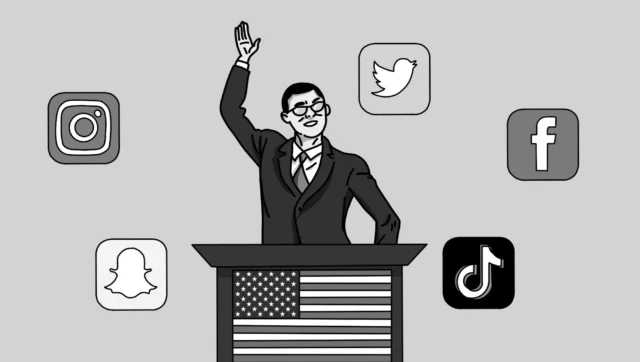Narcissism is a personality trait that includes an inflated sense of self-importance, a deep need for admiration, and a lack of empathy. While these traits can be useful in some leadership roles, they often lead to manipulation, refusal to take responsibility, and prioritizing personal image over ethical decision-making. In politics, narcissism can result in corruption, deception, and division, as leaders focus more on their public persona than on governance.
A narcissistic U.S. president often portrays themselves as a singular solution to the nation’s problems.[1] They seek public admiration, using speeches and media to promote their personal brand rather than policies.[2] When faced with failure, they shift blame to political rivals, the press, or the public instead of accepting responsibility.[3] They surround themselves with loyal supporters rather than those who challenge their ideas, which leads to poor decision-making and an unwillingness to accept criticism.[4]
Richard Nixon is a prime example of a narcissistic U.S. president. His deep paranoia and need for control led him to secretly record conversations, create an enemies list, and orchestrate the Watergate scandal.[5] Even when exposed, he denied wrongdoing, trying to shift the blame instead of taking responsibility.[6] His presidency showcased classic narcissistic behaviors, including deception, manipulation, and a refusal to acknowledge personal faults.[7]
While a narcissistic president can be charismatic and persuasive, their leadership often hides deeper insecurities and an inability to listen to others.[8] Over time, their need for control can weaken democratic institutions, erode trust in government, and create an environment where loyalty to them becomes more important than truth.[9]

Narcissism has long influenced American politics but has grown in recent decades due to media, political division, and changing cultural values.[10] Leaders with grandiosity and a hunger for power have used these shifts to shape government and public engagement. Early U.S. leaders like George Washington prioritized institutions over personal ambition, setting an example of humility.[11] However, figures like Andrew Jackson relied on personal influence rather than democratic institutions. Jackson defied the Supreme Court and pushed controversial policies, demonstrating how unchecked ambition could override legal and ethical considerations.[12]
During the Gilded Age, political narcissism became tied to corruption. Political machines like Tammany Hall controlled cities through bribery, and business leaders influenced government for personal financial gain. As media evolved in the early twentieth century, political image became just as important as policy. Warren G. Harding won the presidency largely due to his charm, while Franklin D. Roosevelt proved that a leader’s persona could shape policy. Figures like Huey Long used dramatic promises to gain power while manipulating public trust.
By the 1980s, politics became more about personality than governance. Ronald Reagan’s background as an actor demonstrated the power of media-friendly candidates, while Bill Clinton used charm to manage public perception. The rise of 24-hour news made politicians more focused on personal branding, turning politics into spectacle.
Today, social media amplifies narcissistic political behavior. Donald Trump used Twitter to dominate headlines, attack critics, and shape narratives. His leadership normalized tribalism, misinformation, and election denial. Many modern politicians now prioritize viral moments over governance. As narcissism continues to shape U.S. politics, the challenge remains whether democracy can withstand these trends or if leadership will increasingly be driven by self-interest.
Footnotes:
- Post, J. M. (2003). The Psychological Assessment of Political Leaders: With Profiles of Saddam Hussein and Bill Clinton. University of Michigan Press.
- Renshon, S. A. (1996). The Psychological Assessment of Presidential Candidates. Routledge.
- Twenge, J. M., & Campbell, W. K. (2009). The Narcissism Epidemic: Living in the Age of Entitlement. Free Press.
- Maccoby, M. (2000). Narcissistic Leaders: The Incredible Pros, the Inevitable Cons. Harvard Business Review, 78(1), 69-77.
- Kutler, S. I. (1990). The Wars of Watergate: The Last Crisis of Richard Nixon. W.W. Norton & Company.
- Dean, J. W. (2006). Conservatives Without Conscience. Viking Press.
- Greenstein, F. I. (2009). The Presidential Difference: Leadership Style from FDR to Barack Obama. Princeton University Press.
- Rosenthal, S. A., & Pittinsky, T. L. (2006). Narcissistic Leadership. The Leadership Quarterly, 17(6), 617-633.
- Lipset, S. M. (1996). American Exceptionalism: A Double-Edged Sword. W.W. Norton & Company.
- Lasch, C. (1979). The Culture of Narcissism: American Life in an Age of Diminishing Expectations. W.W. Norton & Company.
- Ellis, J. J. (2004). His Excellency: George Washington. Knopf.
- Remini, R. V. (1997). Andrew Jackson and the Course of American Democracy, 1833-1845. Harper & Row.




